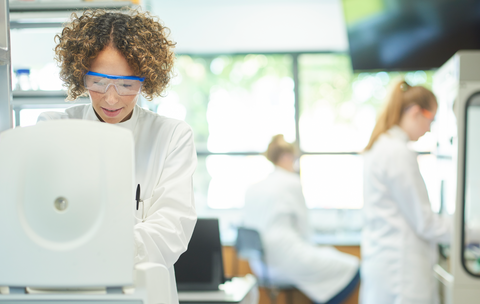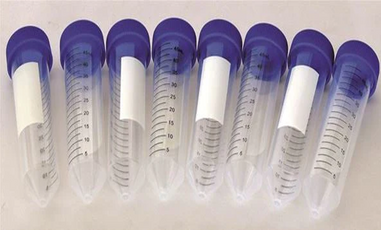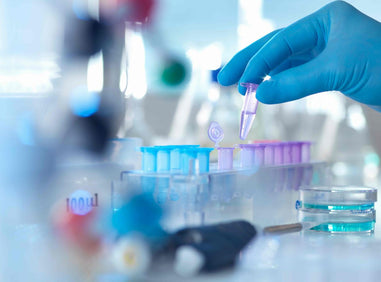- No products in the cart.
As we venture into 2023, the field of chemistry continues to evolve with groundbreaking discoveries and technological advancements. Laboratories around the world are embracing new trends in chemistry lab supplies to enhance research capabilities, improve efficiency, and promote sustainable practices. In this blog, we will explore the top trends in chemistry lab supplies for 2023, ranging from cutting-edge equipment to eco-friendly alternatives, shaping the future of scientific exploration.
-
Automation and Robotics Revolutionize Workflows
Automation and robotics are revolutionizing laboratory workflows, reducing human errors, and streamlining repetitive tasks. Robotic systems for sample handling, compound synthesis, and high-throughput screening enable faster and more accurate data generation. Automated analytical instruments, such as liquid chromatography-mass spectrometry (LC-MS) systems, enhance productivity, allowing scientists to focus on data interpretation and scientific innovation.
-
Smart Lab Devices for Real-Time Monitoring
The integration of smart technology into lab equipment enables real-time monitoring and data analysis. Smart lab devices, equipped with sensors and connectivity features, provide continuous data streams, allowing researchers to monitor experiments remotely and make data-driven decisions. From smart pH meters to temperature-controlled incubators, these devices enhance experimental control and reproducibility.

-
Sustainable and Environmentally Friendly Solutions
The pursuit of sustainable practices is a prominent trend in modern laboratories. Researchers are increasingly adopting eco-friendly chemistry lab supplies, such as biodegradable consumables, recyclable plastics, and environmentally safe solvents. Sustainable lab practices contribute to reducing the environmental impact of scientific research, aligning with global efforts to achieve greener and more responsible chemistry solutions.
-
Single-Use Technologies Enhance Safety and Efficiency
Single-use technologies are gaining traction in chemistry laboratories, especially in bioanalytical and bioprocessing applications. Single-use devices, such as disposable bioreactors, chromatography columns, and pipette tips, eliminate the need for cleaning and validation, enhancing safety and efficiency while reducing contamination risks.
-
Nanotechnology for Precision and Miniaturization
Nanotechnology is revolutionizing the field of chemistry by enabling precise manipulation and miniaturization of materials and reactions. Nanoscale materials, such as nanoparticles and nanocatalysts, offer unique properties that can significantly impact catalysis, drug delivery, and energy storage applications. With nanotechnology at the forefront, the boundaries of what is achievable in chemistry are expanding rapidly.
-
3D Printing for Customized Lab Equipment
3D printing has emerged as a transformative technology in chemistry labs. Researchers are utilizing 3D printing to create custom-designed lab equipment, such as reaction vessels, syringe pumps, and microfluidic devices. This trend allows for cost-effective, on-demand fabrication of specialized tools, fostering innovation and creativity in experimental design.
-
Advanced Analytical Techniques for Deeper Insights
Advancements in analytical techniques are empowering researchers with deeper insights into complex chemical systems. Techniques such as high-resolution mass spectrometry (HRMS), nuclear magnetic resonance (NMR) spectroscopy, and electron microscopy are providing unparalleled detail, driving breakthroughs in fields like metabolomics, materials science, and drug development.
-
Personalized Medicine and Point-of-Care Testing
The integration of chemistry lab supplies with medical applications is evolving rapidly. Laboratories are embracing personalized medicine approaches, tailoring treatments based on individual genetic and molecular profiles. Point-of-care testing devices, like handheld spectrometers and molecular diagnostics, enable rapid and accurate medical decision-making, revolutionizing patient care.
9. Microfluidics
Microfluidics is the study of the flow of fluids through small channels. This technology has a wide range of applications in chemistry, including drug discovery, environmental analysis, and food safety.
In 2023, we can expect to see a growing demand for microfluidics in chemistry labs. Microfluidic devices are becoming smaller, more affordable, and easier to use. This will make them more accessible to a wider range of chemists.
-
Data-Driven Chemistry and Artificial Intelligence
The era of big data is transforming the landscape of chemistry research. Data-driven approaches, combined with artificial intelligence (AI) and machine learning algorithms, are enhancing predictive capabilities, accelerating drug discovery, and unraveling complex chemical interactions. AI-powered models are guiding researchers to novel solutions and optimizing reaction conditions, leading to more efficient and sustainable chemistry practices.
Conclusion
The top trends in chemistry lab supplies for 2023 reflect the dynamic nature of scientific exploration and innovation. From automation and robotics to sustainable practices and nanotechnology, laboratories worldwide are embracing cutting-edge technologies and approaches to advance the frontiers of chemistry. By incorporating these trends into their research workflows, scientists are poised to make significant contributions to addressing global challenges and shaping a more sustainable and technologically advanced future.
For over 40 years, Lab Pro Inc. has been committed to delivering the highest quality chemistry lab supplies, lab equipment, reagents, distance learning kits, and cleanroom PPE apparel. Renowned by global medical device companies and laboratories, we ensure exceptional quality in every product. Contact us online or call 888-452-2776 to learn more. Discover top-notch lab supplies and elevate your experiments today!












































